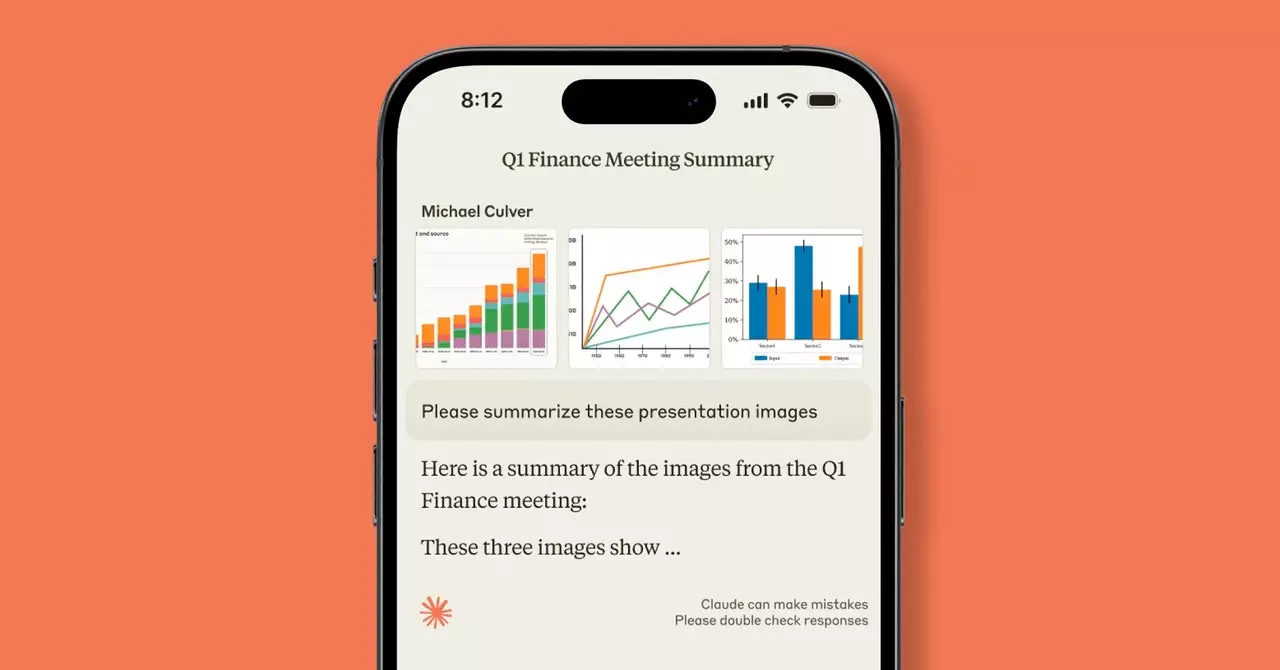In a world where technology continues to advance at a rapid pace, the use of artificial intelligence (AI) in everyday tasks is becoming more prevalent. Joel Lewenstein, a head of product design at Anthropic, recently experienced the power of AI firsthand when he turned to Anthropic’s Claude chatbot for assistance with deciphering his irrigation system. This encounter highlighted the potential of AI image analysis in aiding users with a variety of tasks, from identifying objects to extracting key information.
Breaking Free from Traditional Query Styles
Decades of relying on Google Search have conditioned us to use concise and direct queries to find information quickly. However, when engaging with chatbots like Claude, a shift in communication style is required. Rather than inputting a few keywords, users are encouraged to engage in more conversational prompts that provide context and detail. By adopting a more verbose approach, users can elicit more accurate and useful responses from the chatbot.
Utilizing AI Image Analysis for Enhanced Interactions
Although AI image analysis is a relatively new feature for Anthropic’s chatbot, it offers a powerful tool for initiating conversations and solving queries. By uploading images and using them as conversation starters, users can leverage the chatbot’s abilities to analyze visual data and provide relevant insights. While the accuracy of the feature may vary, it presents a unique and engaging way to interact with AI technology.
Optimizing Conversations for Maximum Efficiency
In order to make the most of interactions with Claude, users are advised to provide clear and detailed instructions in their prompts. By being overly prescriptive and offering specific guidance on formatting, tone, and audience, users can guide the chatbot towards delivering more tailored responses. Additionally, following up with clarifying questions and feedback can help steer the conversation in the right direction and improve the overall user experience.
One of Claude’s strengths lies in its ability to analyze uploaded data, particularly text-based documents. This feature can be particularly beneficial in workplace scenarios, where the chatbot can assist with tasks such as Excel spreadsheet analysis and email management. By uploading documents and requesting insights on patterns or key themes, users can streamline their workflow and extract valuable information efficiently.
While efficiency is key in AI interactions, there is also value in engaging and human-like outputs from chatbots. Claude’s conversational style and ability to provide poetic descriptions demonstrate a more friendly and interactive approach to communication. By embracing the conversational nature of chatbots and engaging in back-and-forth dialogues, users can experience a more personalized and enjoyable interaction with AI technology.
As the field of chatbots continues to evolve and improve, it is essential to remain open to exploring new tools and technologies. While familiar tools like ChatGPT may be reliable, incorporating new platforms like Claude can offer a fresh perspective and a different communication style. By adapting to the changing landscape of AI chatbots, users can stay ahead of the curve and leverage the full potential of these innovative tools.
Anthropic’s Claude chatbot represents a glimpse into the future of AI communication, offering users a unique and engaging way to interact with technology. By adopting a conversational approach, leveraging AI image analysis, and providing clear instructions, users can unlock the full potential of chatbots and streamline their daily tasks. As AI technology continues to advance, embracing new tools and communication styles is essential in staying at the forefront of innovation.


Leave a Reply